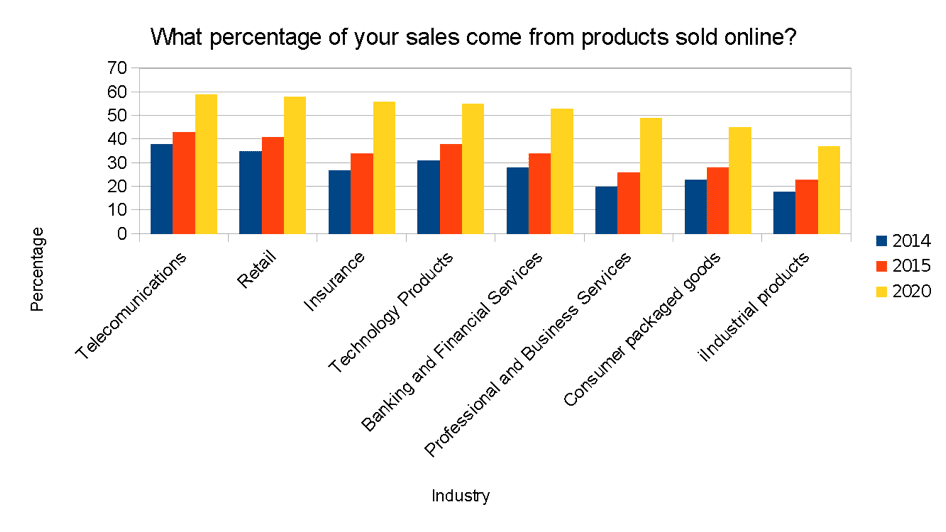A new fiscal year has come and businesses have started – or finished to – re-evaluate their approach for the upcoming year. CIOs, just like in previous years, have started to slowly come out of their shells and become more active towards business-related aspects. They’re not just the guys in charge of the PC systems anymore and in this article, we explore as to what are the expected trends we should expect from our 2018 CIOs.
Given technology’s extremely fast paced advancements, you can almost expect that amongst the company’s organization structure, the CIO would have the most dynamic role. The CEO may have the most daunting of names, but the CIO would have to be flexible in the name of the ever changing environment.
From being a delivery executive to a business executive, the workplace has started to expect a more hands-on CIO when it comes to managerial duties. This includes being concerned with reducing costs, exploiting data centers for profit, and reevaluating processes to increase revenue. This change in trend is not a sudden shift and actually, 78 percent of CIOs are becoming more adaptable and welcoming to change in their respective IT organizations.
Most of the change comes from digitalization or the use of technology to alter business models to create more avenues for revenue and opportunities. Embracing this would certainly mean an inevitable shift of priorities such as:
- IT-outcome to Business-outcome
- Assisting or taking orders to compelling or being collaborative
- Cost control to revenue building
- Sourcing to creating
- Within the box of IT to everywhere in the workplace
What we can takeaway from here is that the workplace is broadening the CIO’s role from being just focused on the company’s IT structure to being more involved and proactive towards its business decisions. Doing this harnesses one of the most valuable thing in the business world – growth. Growth is still the most prioritized business objective amongst companies.
However, despite the obvious favorite – focusing on the other business objectives namely:
- Digitalization to reap economies of scale
- Profitability
- Innovation, research & development, new products
- Customer focusing
- Possible mergers, acquisition, and transaction that would bring in a new pool of talent

Albeit indirect, these would still provide areas for growth. Also since IT budgets across the world have increased between 2.0 percent to 5.1 percent, there is funding available to support such growth. However, it is worth noting that companies could perhaps allot some of this budget towards strengthening cybersecurity as 95 percent of CIOs expect threats to continue and increase.
Growth means larger and more output. Companies strive to attain this through economies of scale where larger production derives a lower cost. However, this can be tricky for companies to achieve and would mean rethinking their business model and “jumping the curve”. They have to innovate processes in order to avoid stagnancy and being left out.
By 2020, it is expected that half of company sales would come from digital business – and executives are aware of this.

As seen on the chart, companies in several industries all believe that digitalization has a wider impact on their sales than it did on prior years with them estimating that share of products sold online account for more or less half of their total sales. While industries such as industrial products are harder to market online, telecommunications and retail figures show that online shopping is becoming more and more accepted as an avenue for revenue.
This itself already shows that business objectives would inevitably lean towards the hands of the CIOs as who else is better fit to guide the company towards this innovation but them.
The digital world is anything but lacking from innovation however CIOs face walls whenever they attempt to jump into the larger waters. CIOs cite a broad-based culture change and their imposed job objectives as some of the ‘bricks’ they have to tear down in order to facilitate scale improvements.
This is where the trend shift comes in. CIOs have started to spend more time on executive leadership now than from previous years. In addition, their priorities also imply where they would spend their time the most. While BI/analytics takes the cake on being prioritized the most, digitalization and cloud services are also up there. However, there have been discrepancies between the priorities of tech companies relative to their performance in the industry.

Top-performing companies pay less attention to customer relationships perhaps due to the fact that they’re more established in the marketplace and thus, they do not need to allot more resources towards retaining or gaining market position. They are also able to explore the ever-so-fascinating artificial intelligence where there are still a lot of room for growth. On the other hand, trailing companies focus on enterprise resource planning which tends to focus more on the company’s core business processes which, given their standing, might have more areas of improvement. But regardless these differences, the CIOs’ inclination towards BI/analytics imply that they have started to become more ingrained towards business growth.
With all these possible shifts and trends for 2018, it would seem as if change is coming. Despite its inevitability, 78 percent of CIOs say that they’re armed and ready, mainly due to digitalization. If there is a time to accept the shift with an open arm, now is the time to do so. There is so much talent and opportunity to become pioneers in the industry. Scaling the business has never looked so friendlier with all the advancements in technology. It is now the time to build up your team to become more resilient and adaptive towards the ever changing industry. Of course there still are doubts but having an open mindset is the start of something promising. It would suck to be left behind peer companies so leadership teams should start becoming more accommodating on what is bound to happen.
CIOs are no longer just expected to build and create. They are now expected to integrate services and produce efficiency in all the aspect of the business. CIOs need to invest in technologies that are able to provide such services that will in turn have an impact on the IT organization. So get ready to see more of your CIOs in action and discussion and more proactive in the business cycle.


ROLE DESCRIPTION
We are looking for a Membership Manager to join the company and take on one of the most opportunistic roles the industry has to offer. This is a role that allows for you to create and develop relationships with leading solution providers in the enterprise technology space. Through extensive research and conversation you will learn the goals and priorities of IT & IT Security Executives and collaborate with companies that have the solutions they are looking for. This role requires professionalism, drive, desire to learn, enthusiasm, energy and positivity.
Role Requirements:
Role Responsibilities:
Apex offers our team:
Entry level salary with competitive Commission & Bonus opportunities
Apex offers the ability to make a strong impact on our products and growing portfolio.
Three months of hands on training and commitment to teach you the industry and develop invaluable sales and relationship skills.
Opportunity to grow into leadership role and build a team
Extra vacation day for your birthday when it falls on a weekday
All major American holidays off
10 paid vacation days after training period
5 paid sick days
Apply Now >>